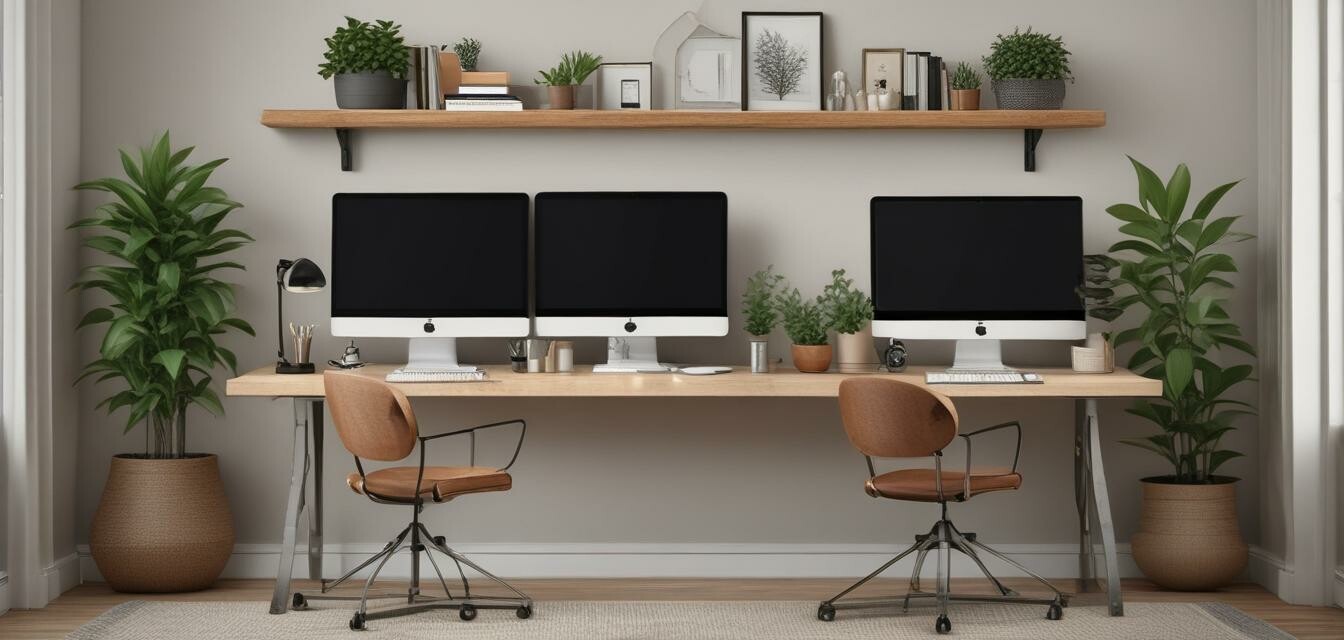
Organizing Your Office for Local and Remote Meetings
Key Takeaways
- Designate specific areas for local and remote meetings.
- Invest in technology to enhance the remote meeting experience.
- Utilize ergonomic furniture for comfort during long meetings.
- Incorporate adequate lighting for video calls.
- Maintain a clutter-free workspace for improved focus.
Setting up your home office to effectively accommodate both local and remote meetings is essential in today's hybrid work environment. This article provides practical tips on optimizing your workspace to foster productivity and professionalism, regardless of whether you're meeting in person or virtually.
1. Create Distinct Meeting Zones
Having designated areas for different types of meetings can significantly improve your organization and focus. Here are some strategies to establish these zones:
- Local meeting area: Choose a corner of your office where you can comfortably accommodate guests. A small table with a couple of chairs works nicely for this setting.
- Remote meeting space: Set up a well-lit area with a professional backdrop for video calls. This can be a simple wall with a neutral color or some tasteful artwork.
2. Invest in Technology
Equipping your home office with modern technology is crucial for smooth meeting experiences. Here are some essential tech upgrades:
- High-quality webcam: Clear video is essential for remote meetings.
- Microphone: A good microphone can dramatically improve audio quality.
- Screen sharing capability: Ensure your setup includes features for sharing your screen during presentations.
3. Ergonomics Matter
Incorporating ergonomic furniture plays a vital role in ensuring comfort during long meeting hours. Below are some recommendations for furniture:
| Furniture Type | Benefits |
|---|---|
| Ergonomic chair | Supports posture, reducing back pain. |
| Height-adjustable desk | Allows for both sitting and standing options. |
| Footrest | Enhances leg comfort, preventing fatigue. |
4. Ensure Proper Lighting
Good lighting is essential, especially for remote meetings where video quality is critical. Follow these tips:
- Use a mix of natural and artificial lighting.
- Position your light source in front of you to avoid shadows.
- Consider investing in lighting solutions, such as a ring light, to enhance brightness during video calls.
5. Declutter Your Workspace
A tidy office can boost your readiness and focus for meetings. Here are some tips to maintain an organized space:
- Use storage solutions, such as filing cabinets, to keep documents in order. You can explore types of filing cabinets here.
- Limit distractions by clearing your desk of unnecessary items.
- Establish a system for managing digital clutter, such as categorized folders for files.
6. Add Personalization
Infusing your personality into your home office can enhance motivation during meetings:
- Decorate with plants, artwork, or inspirational quotes.
- Incorporate comfortable pillows or cushions for added flair and comfort.
- Select a color scheme that reflects your style while remaining neutral for video calls.
Pros of a Well-Organized Office
- Improved productivity during meetings.
- Enhanced professionalism projected during calls.
- Increased comfort and reduced fatigue.
- Greater clarity and focus with designated area setups.
Cons of a Disorganized Office
- Higher stress levels due to clutter.
- Miscommunication and distractions during meetings.
- Poor quality of video or audio in broadcast settings.
- Decreased motivation leading to reduced productivity.
Conclusion
By organizing your home office to accommodate both local and remote meetings, you can create a more productive and efficient workspace. Implementing these tips not only ensures you are prepared for whatever meeting style arises but also promotes a more inviting environment for both you and your guests.
For more ideas on structuring your workspace, visit our Tips and Inspiration category.